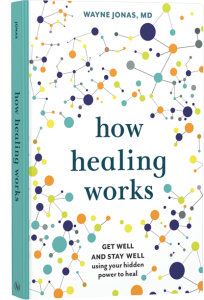For years the Mediterranean diet has shown steady health benefits, such as lowering inflammation, helping you lose weight, maintaining your memory and brain function, and much more.
The basics of the Mediterranean diet
A good place to start is our free Mediterranean Diet Pocket Guide. But here are the basic principles that can improve most Americans’ health. Always keep in mind, watching your serving size is important to receive all the benefits the Mediterranean diet has to offer.
- Consume plant foods. Go beyond green! This includes whole grains, beans, nuts, and fruit.
- Limit red meat. Perhaps designate one night a week as “steak night.” Your red-meat meal could just as easily be a great burger or a stir-fry.
- Eat fish twice a week. This doesn’t have to be a huge portion of expensive fish. Oil-packed canned tuna on a salad is a great way to get your fish in.
- Limit yourself to three servings of dairy a day if you consume dairy.
- Season meals with spices and herbs but less salt. Watch out for processed foods with high salt content, such as canned soups used as sauces.
But with a busy lifestyle, kids who want mac ‘n’ cheese from the blue box, and food prices that seem to rise every time you visit the store, how realistic is the Mediterranean diet if you have a tight budget or don’t like salmon?
Make a list of your favorites
Make a list of your favorite foods in each category (if you have kids or a spouse, ask them to join in). Turn those favorites into meals and snacks with small changes like leaning on low-sodium spice mixes, herbs, or even lemons to sharpen flavors. Your list for just the first category might look like this:
- Apples, oranges, grapes, bananas, blueberries—easy snacks, great for smoothies, and perfect for a sweet dessert.
- Green beans, kale, tomatoes, broccoli, peppers—stir-fry, salads, and oven-roasting are great cooking methods.
- Potatoes, sweet potatoes, plantains—sliced, diced, mashed—you can’t go wrong!
- Whole-wheat and regular pasta, rice, barley—be sure to measure carefully for portion control, but don’t be scared to add these to your eating routine.
- Whole-grain bread, almonds, peanut butter, almond butter—watch your serving size, but these are great options for eating healthy fats and protein.
Smart shopping
You don’t have to spend all your money in the produce and seafood sections of the grocery store. Frozen fruit or vegetables without any added sugar or sauces cost less and allow you to enjoy out-of-season products while getting the same health benefits. For flexibility in when you eat fish, you can often purchase individually frozen six- to eight-ounce filets. They can bake from being frozen or thawed.
Another place to pick up fresh ingredients is to visit a farmers’ market and purchase in-season items. The produce can be much fresher and tastier than what you find in the grocery store. If you’ve only tasted grocery store broccoli, you’ll be amazed at the difference.
A staple to the Mediterranean diet is salmon or any fatty fish including tuna. But four six-ounce servings of salmon can be very expensive. Fresh or frozen fish are equally beneficial.
If you aren’t sure you enjoy fish, try these tips:
- Try a white meat fish, such as cod, with a mild flavor first.
- Add a squeeze of lemon.
- Don’t overcook your fish. Look online for recipes with at least four stars and lots of positive reviews.
- Try an air fryer. This handy appliance is now in many kitchens and creates homemade fish and chips using less oil.
Painless preparation
Pressure cookers and air friers can also speed up cooking times. One example is to slice or dice yams or sweet potatoes and pop them in an air fryer. This works for several vegetables that might not be appealing with other cooking methods. It’s also a quick way to bake fish.
The Mediterranean diet is flexible—you don’t have to make complicated recipes for a delicious meal thanks to various kitchen cooking methods, and easy recipes available online.
Snacks
Don’t bypass getting in some healthy Mediterranean favorites because it isn’t time for a typical full meal. Use this time to squeeze in fruits, vegetables and healthy fats. Try a slice of toasted whole-grain bread with a bit of almond butter and sliced bananas. An apple and a few cubes of cheddar cheese can fill you up while you consume fiber, a savory flavor, and a dairy serving for the day. Pair roasted chickpeas or hummus with carrots for a quick snack. Once you get the hang of it, you’ll be able to fill any snacking desires between meals.
Find some inspiration
Pick up a Mediterranean diet cookbook and page through it for inspiration. You can find many of these at the local library, so there’s no need to spend a dime on a book that will sit on your shelf. Try before you buy or do an easy search online for recipes with high ratings. Favorites include:
- 30-Day Mediterranean Budget Meal Plan
- 5-Ingredient Mediterranean Cookbook
- The Easy Everyday Mediterranean Diet Cookbook
- Mediterranean Instant Pot
We are what we eat
The bottom line is what we put into our body is important to our health. It impacts how we feel and how we can proactively prevent or improve many health conditions. Read our blog, “Three Reasons Why Eating Well is Not Just about Food“ for more in-depth information on how important eating is to your health.

Take Your Health Into Your Own Hands
Drawing on 40 years of research and patient care, Dr. Wayne Jonas explains how 80 percent of healing occurs organically and how to activate the healing process.

